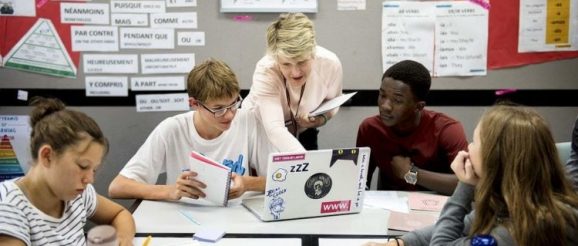Looking Ahead: Why Relationships Must Drive School Innovation | GOA

Take the use of technology tools with younger students as an example. We will never take these tools away from students now that they’ve been exposed to them. Teachers have been trying new tools as they move between in-person and remote learning, and in many cases the solutions they’ve implemented have aided learning and created opportunities for students to engage with school in new ways. Not just by attending school via Zoom, but by engaging with their work through platforms that allow them to express their ideas, to find resources they may not have found in class, and to share their learning through a variety of tools and platforms. The floor for what kids need to know and be able to do has been raised, which means teachers need to know how to best leverage these new tools and technologies. To do that, school leaders need to support their faculty by providing the right training, resources, and support. Clarity around what the expectations are for integrating technology into the classroom can be made explicit by naming it as a competency all teachers in that school need to demonstrate mastery in.
These shared goals that provide meaning and clarity around teachers’ work will also be critical in retaining faculty over time. The entire workforce is facing hiring and retention issues and schools will be impacted as well. According to surveys conducted by NAIS, 44% of participating independent schools reported increased faculty turnover. Coupled with a Washington Post/Rand Corp survey that found one in four educators is thinking about leaving the profession, we are facing a potential crisis.
Teachers want opportunities to learn and grow, and they want to know what’s expected of them. This can be achieved through a clear articulation of the skills schools expect teachers to develop combined with a robust professional learning plan that supports them in acquiring and practicing those skills. The result will mean more uniform and improved assessment practices; better implementation of technology in the classroom through increased training and clearer school expectations and goals; improved faculty wellness and decreased burnout; and improved education training programs as schools are clearer about the types of skills they need their faculty to demonstrate.
To do this, schools need to be responsive institutions. We can’t ask everyone around us to change if we’re not willing to change ourselves. When a faculty member is learning and growing, they need to know that they’re re-entering a school that has also evolved and is ready to adapt, too. Too often we see teachers asked or prodded by school administrators to learn something new, but then to apply those new skills within a system that can’t support those changes.
In order to support those changes administrators, too, need to skill-up. Middle leaders in schools need to shore up their skills to support the teachers and students in their schools. Conflict resolution, project management, public speaking, written communication, meeting facilitation, and time management are just some of the skills leaders need to practice and hone to effectively lead. To do that, we’re going to see an increase in leadership coaching and structured mentoring programs to ensure that the development of these skills isn’t just happening via happenstance, but because administrators are proactively working on and developing them.
